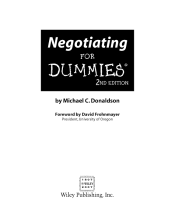Managing Profitability and Cash
14 important questions on Managing Profitability and Cash
What are the important questions regarding cash flow?
- Will you have enough cash to meet next Friday's payroll?
- Will you have enough cash to pay that big vendor invoice that's due the following Monday?
- Wll you have enough cash to pay the bankloan payment, the upcoming utility bills, and the real estate taxes that will be due at the end of the month?
What is the Profit and Loss Statement?
Which three questions define any business's profitability?
As a result of comparing the columns, the P&L allows you to quickly answer the three questions that define any business's profitability:
- Have you controlled your costs?
- Have you maintained or improved your gross margin?
- Have you maintained or increased sales?
- Higher grades + faster learning
- Never study anything twice
- 100% sure, 100% understanding
What is a balance sheet?
What are the two overall points about the numbers, ratio, and percentages that come from those financial statements?
- Comparison work best.
- The industry matters.
What is return on sales (R.O.S.)?
How do you determine the number of days in receivables?
Generally speaking, fewer than 30 days in receivables is considered excellent, between 30 and 45 days is acceptable, and more than 45 is cause for concern.
What are the benefits of improving your efficiency at handling inventory?
- Profitability: the less inventory you have to write off, the more profitable you become.
- Cash flow: the fewer dollars you have invested in inventory, the more cash you have in your bank account.
Which tips should be used when inventory is an integral part of your small business?
- Gather information on past purchasing and sales transactions. The more information on past purchasing and sales transactions you have, the better your future purchasing decisions can be.
- Divide your inventory into small, manageable pieces.
- Make sure that you have a workable system and qualified employees in place at the inventory-handling corners: shipping and receiving.
- Take frequent physical inventories.
- When selecting suppliers, don't simply settle on the supplier with the lowest price. Include delivery time and shipping dependability at or near the top of your criteria.
What are the tips regarding how to do business with paying customers and how to collect your accounts receivable?
- Use a credit application.
- Evaluate every applicant. Does the applicant have the ability to pay? Has she indicated by her past actions a willingness to pay on time? Can you make a reasonable profit on sales to this account?
- Ask for a financial statement.
- Check credit.
- Establish terms.
How can you manage your accounts receivable?
- Bill promptly. Bill the same day your ship.
- Track the time it takes your customers to pay their bills. You need to age all outstanding receivables at least once a month.
- Begin collections promptly.
- Utilize a carrying charge or interest charge.
- Don't ship to nonpayers.
- Involve the boss. A call from the owner or boss is always more effective than a call from the bookkeeper.
- Use a collection agency only as a last resort. They are expensive and not known for their consideration and politeness.
What are the three ways to increase your business's profitability?
- To decrease expenses.
- To increase margins.
- To increase sales.
Start with decreasing expenses, after that increasing margins and than, the toughest job, increasing sales.
How does Zero-based budgeting work?
How do you increase sales?
The question on the page originate from the summary of the following study material:
- A unique study and practice tool
- Never study anything twice again
- Get the grades you hope for
- 100% sure, 100% understanding
































